A Studio Visit and Interview with Artist Marcella Granick
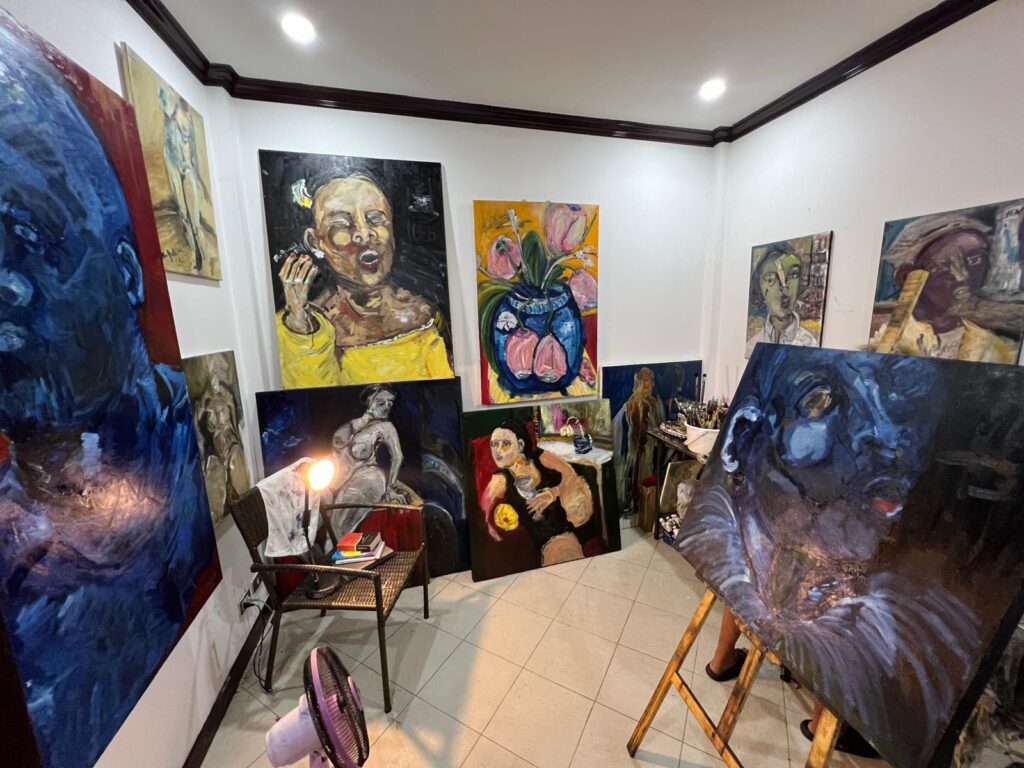
Walking into Marcella Granick’s studio feels a little like stepping into someone’s thoughts while they’re still forming. Canvases rest against the walls in every stage you can imagine, some just starting to speak, others already carrying a quiet intensity. The room smells of oil paint, coffee, and a bit of yesterday’s effort. Nothing feels stiff or arranged. It’s the kind of space where work is truly happening.
During this visit, Marcella talks about how ideas usually show up in small pieces: a line she jots down, a feeling she can’t quite name, a moment she notices in someone’s posture. Her background in the social sciences shows up in the way she pays attention to people, and that curiosity finds its way into the figures she paints. She moves between large, physical canvases and smaller, more controlled ones, letting each piece dictate when to step closer or step back. Brushes, knives, cloths, books, her laptop, and whatever music fits the moment are always nearby.
Two things stay steady on her wall a poem she wrote during a tough stretch in her life and a photograph of Robert Johnson that shaped her painting Cool Riff on the Bass. They sit quietly in the background, almost like two steady voices she can return to.
As she walks us through the space, the room starts to feel less like a studio and more like a living process. Canvases shift places, the light changes the way a piece looks from morning to night, and ideas take their time finding shape. It’s a place built for showing up every day, staying with the work, and letting each painting grow at its own pace.

I am a contemporary figurative-expressionist painter exploring the quiet intersections of silence, endurance, and transformation. My work explores how emotion, memory, and self-presentation shape the ways we inhabit our bodies and construct meaning from our experiences. Informed by both my background in the social sciences and a career built around understanding people, my work begins with an observation of how we present, protect, and reveal ourselves.
That awareness guides both the emotional and compositional rhythm of my paintings. I work primarily in oil, using layered gesture, distortion, and restraint to reveal the psychological weight beneath stillness. Each painting becomes a study in vulnerability and control, reflecting the delicate equilibrium that defines being human. Largely self-taught, I was mentored by the late Canadian painter Jon Tobin, whose early confidence in my work taught me to trust my instincts over imitation. My paintings remain intentionally unfinished, mirroring the continual process of becoming, the breaking, rebuilding, and quiet transformations that mark a life fully lived.
1. Can you walk us through your studio space? What’s the first thing you see when you walk in?
The first thing I see when I walk in is opportunity, and sometimes a bit of yesterday’s mess. Canvases are everywhere in various stages, some mid-thought, still breathing. The room carries the memory of what happened the day before and the quiet possibility of what might unfold next. The space itself feels alive, full of tension, energy, and reminders of what I haven’t yet said. Stepping through the studio door feels like crossing into another state of mind. It’s where I leave everything behind—expectation, hesitation—and face the work as it truly is.
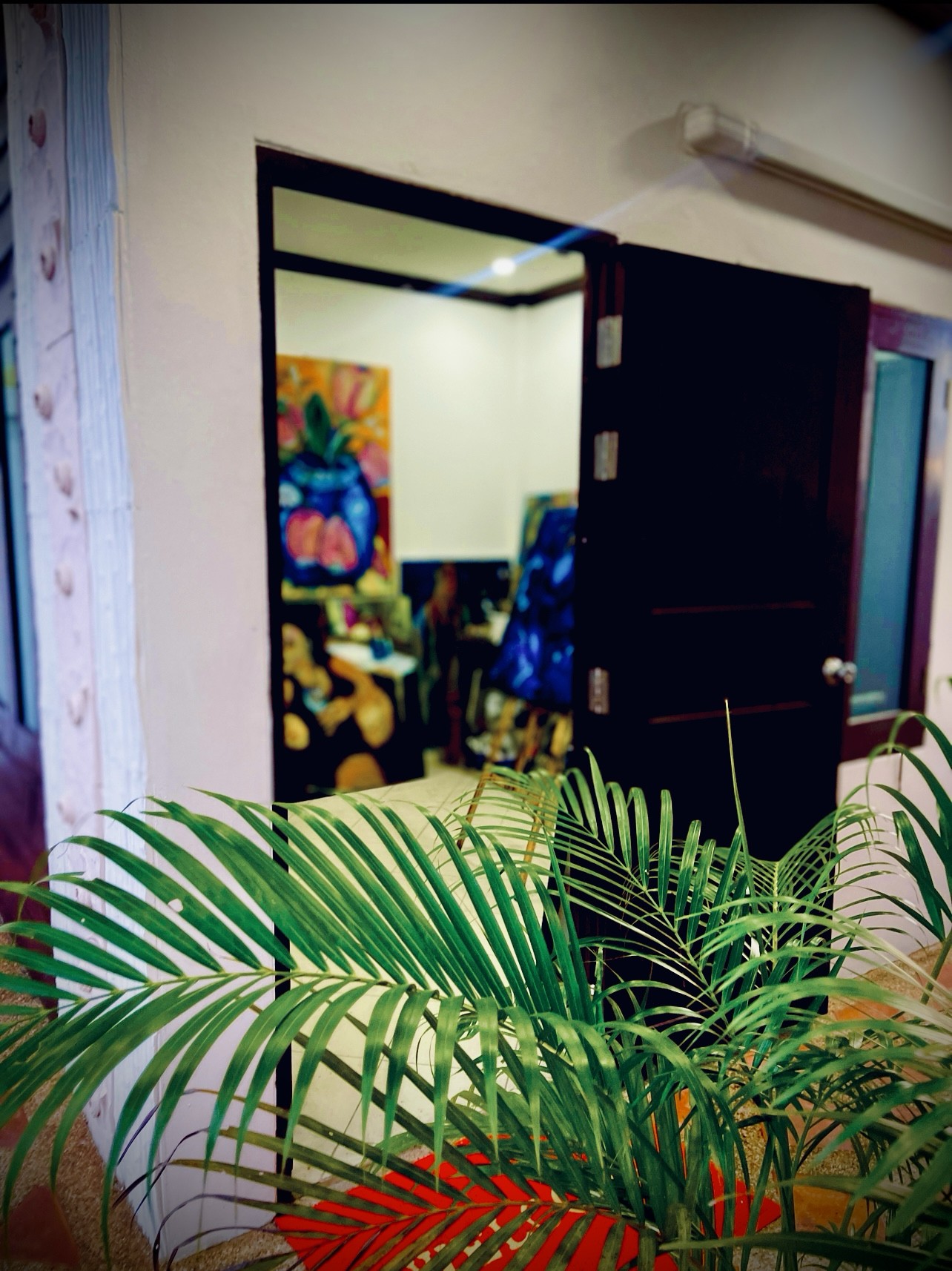
2. How is the space arranged to support the way you like to work on a painting from start to finish?
The studio is divided by energy and focus. One wall holds larger works where movement matters, pieces that require my whole body to engage. The opposite wall is quieter, reserved for detail and reflection. There’s always an open space in the middle so I can step back, circle the work, and shift perspective as it develops. But the arrangement is never fixed. Canvases move constantly, trading places as energy changes. What’s on the studio wall one day might be on the floor the next. Pieces often rotate into my home, allowing me to live with them for a while and see them in everyday life. The space adapts to the rhythm of the work, not the other way around.

3. What materials or tools do you keep closest to you while working?
Everything I need is within reach. My palettes, brushes, knives, and cloths stay on a side table beside the easel; it’s a controlled kind of chaos. I keep my laptop and tablet nearby for reference, research, and reading, and books from various genres are always available somewhere in the room. Coffee and water are constants. My phone is there too, primarily for photographing progress or jotting down thoughts between layers. Music is a constant presence, anything from Beethoven to Kanye, depending on the emotional temperature of the work. The mix of physical, digital, and sensory tools reflects how I paint: grounded in material, yet always thinking, listening, and observing.

4. Are there certain books, film stills, or notes that stay in the studio as part of your process?
My studio space is now more minimalist. Most of what I used to surround myself with stayed behind when I moved, and I’ve come to appreciate the clarity that comes with less. On one wall hangs a poem I wrote several years ago — a reminder of strength, resilience, and reclamation of power. Beside it is a print of the Robert Johnson photograph that continues to inspire me and served as a reference point for my “Cool Riff on the Bass” painting. Those two pieces feel like anchors, quiet reminders of why I create and what I’ve carried forward.

5. How do you usually keep track of ideas as they move from your journals into the canvas?
Ideas rarely arrive in order. They show up in fragments — a sentence, an image, a feeling I can’t quite name. I jot notes wherever I can: on the back of a canvas, on my easel, or in my phone if I’m trying to stay organised. Some notes resurface months later and suddenly make sense; others remain as reminders of something I wasn’t ready to paint yet. It’s a loose system, but it works. The critical part is catching the thought before it disappears, knowing that it will find its form when the time is right.
6. What does a typical day in this studio look like for you?
I’ve learned that consistency matters more than inspiration. Some days are full of energy, others are about simply being present in the studio. My days aren’t fixed; sometimes I start at 4 a.m. and finish by 3 a.m. If I’m not painting, I’ll read, handle administrative work, or do drawing drills to stay sharp. I might even sit and think, letting ideas settle. The point is to stay connected, to be in the space, engaged with the work, even in silence. That steady presence keeps the practice alive, no matter what the day looks like.
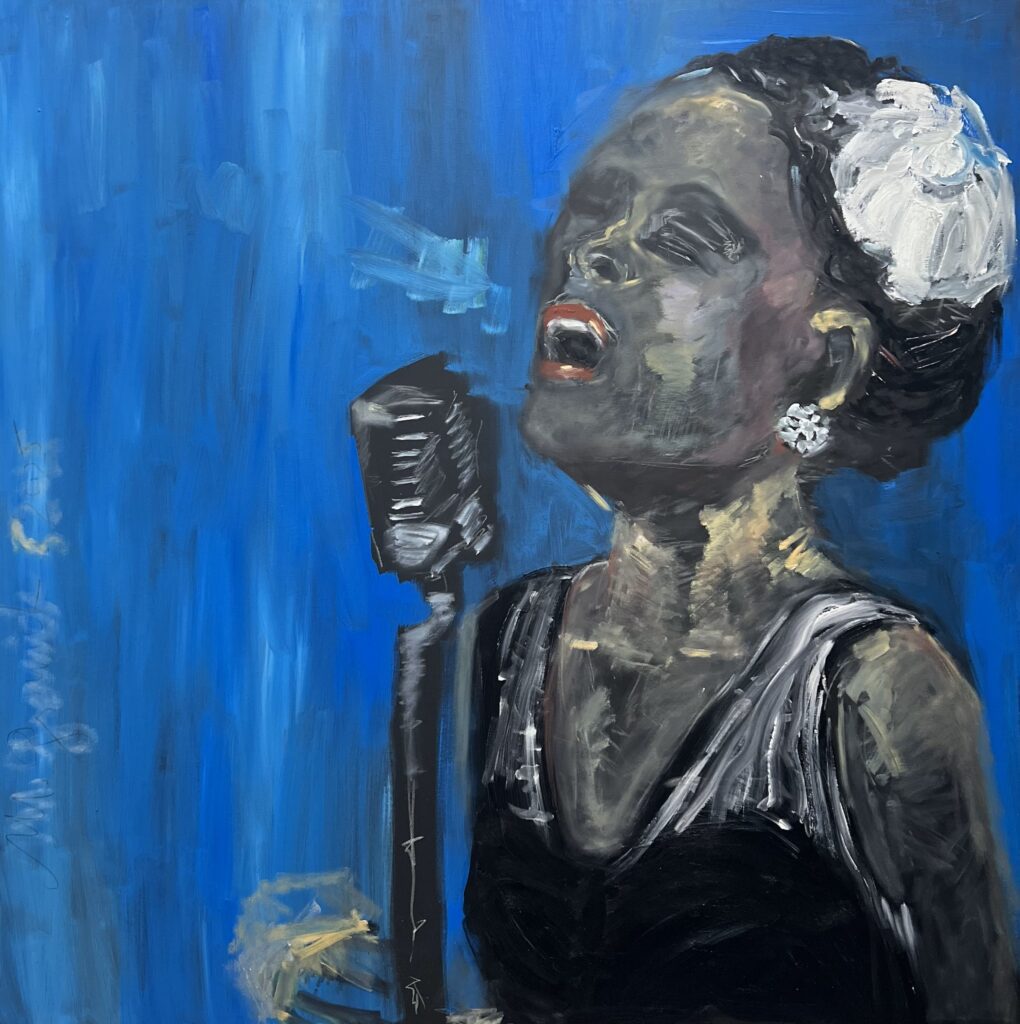
7. How does the light in this space change the way you approach a painting?
The light in my studio is steady and natural during the day, then shifts to a more focused, reflective atmosphere at night. I’ve learned how each type of light reveals something different in the work. Daylight helps me see structure, colour, and balance, while evening light allows me to feel the mood and emotional temperature of a piece. I often revisit a painting at different times of day to see if it still holds together. Light doesn’t control my process — it simply helps me know what’s really there.
8. Do you have works in progress visible around the room, or do you prefer to focus on one piece at a time?
There are works everywhere, in various stages of becoming. I like to move between pieces rather than stay fixed on one. Each painting holds a different energy, and shifting between them helps me see more clearly. Sometimes one piece informs another; sometimes I step away from one to find the answer in a different canvas. It’s a way of keeping the studio alive, allowing the work to stay in conversation with itself.
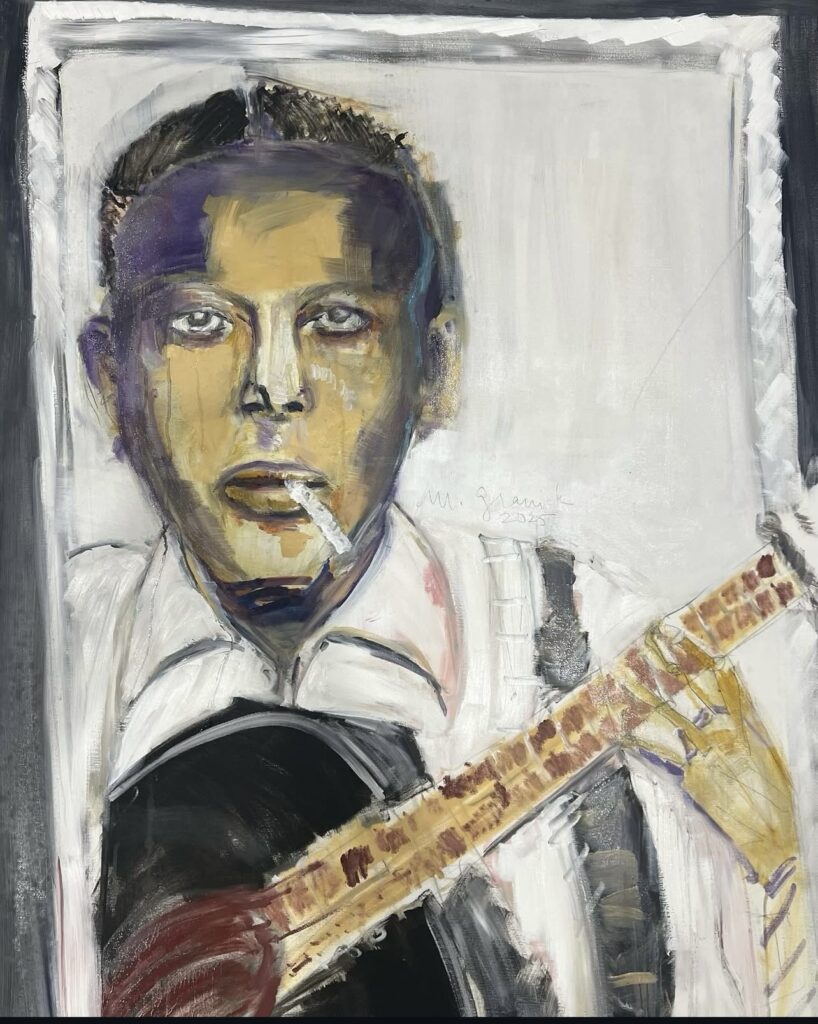
9. Is there a spot in the studio where you usually pause to step back and look at the work differently?
There isn’t one particular spot. I’m constantly moving around the studio, looking from every angle — up close, from far away, upside down, through the lens of a camera, or in a mirror. Each view reveals something different. I also take pieces out of the studio to see them in natural light and everyday space. And yes, I do have to force myself to stop, sit, and look. That kind of stillness can be the hardest part.

10. If you get a chance to set up your studio anywhere in the world, where would it be?
I am very fortunate to have this space in Thailand. It’s where I’ve been able to focus, build consistency, and grow in ways I couldn’t have imagined before. However, if I could set up another studio anywhere, it would be along the Mediterranean coast. I’m drawn to the history, the art legacy, and the rhythm of life there. It feels like a place where reflection and creation could coexist naturally, where the culture itself seems to breathe art.
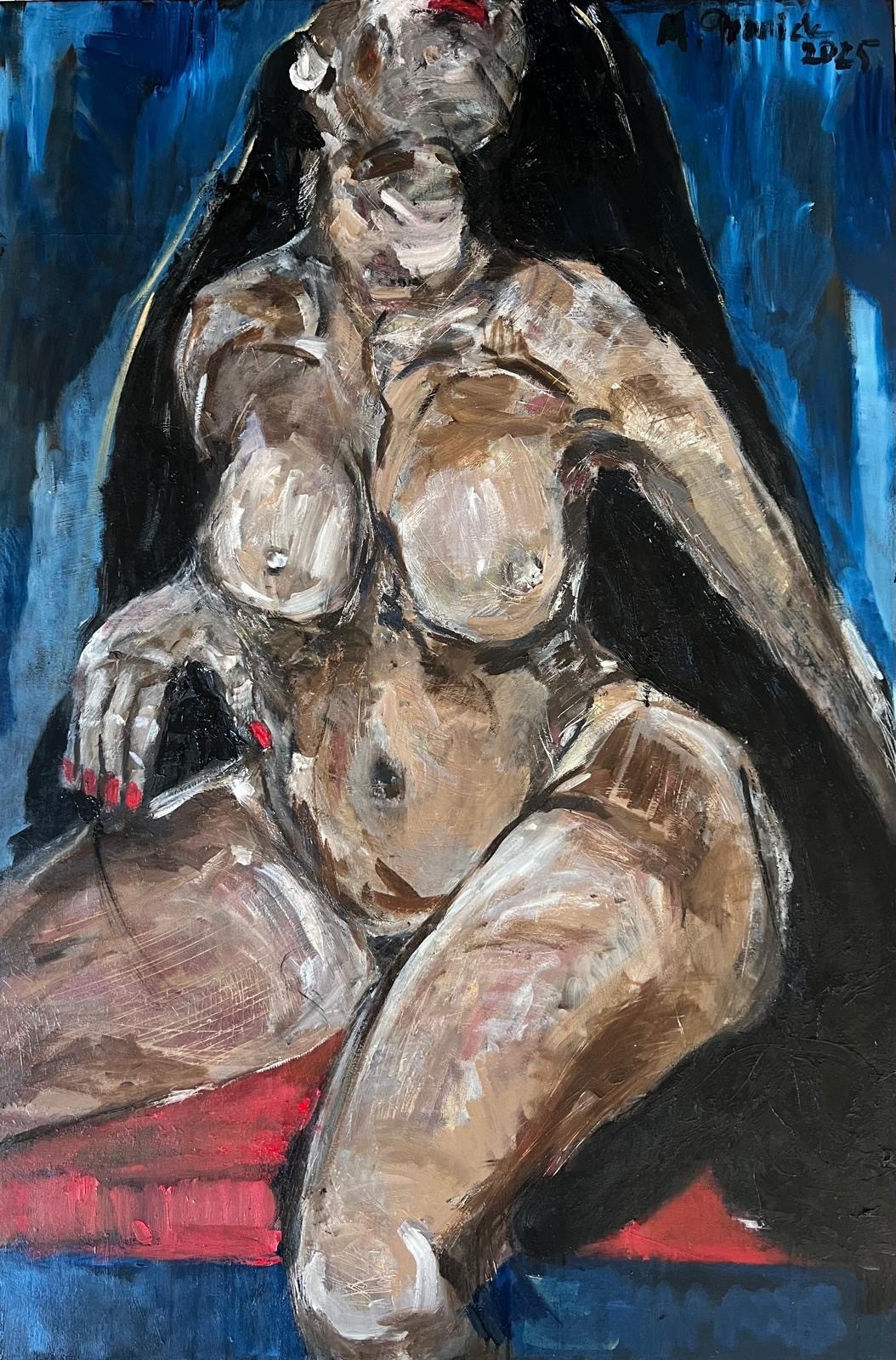

Walking out of Marcella Granick’s studio, you carry a bit of the room with you. The slow hum of work, the half-formed ideas, the paint-scented air, the way canvases seem to watch from every corner. It’s a space that doesn’t try to impress you. It simply lets you see how things grow over time.
There’s a steady calm to it, the kind that builds from showing up day after day. As the door closes, you get the feeling the room will stay busy even in silence, ready for whatever thought or feeling she brings in next.
To learn more about Marcella, visit the links below.
